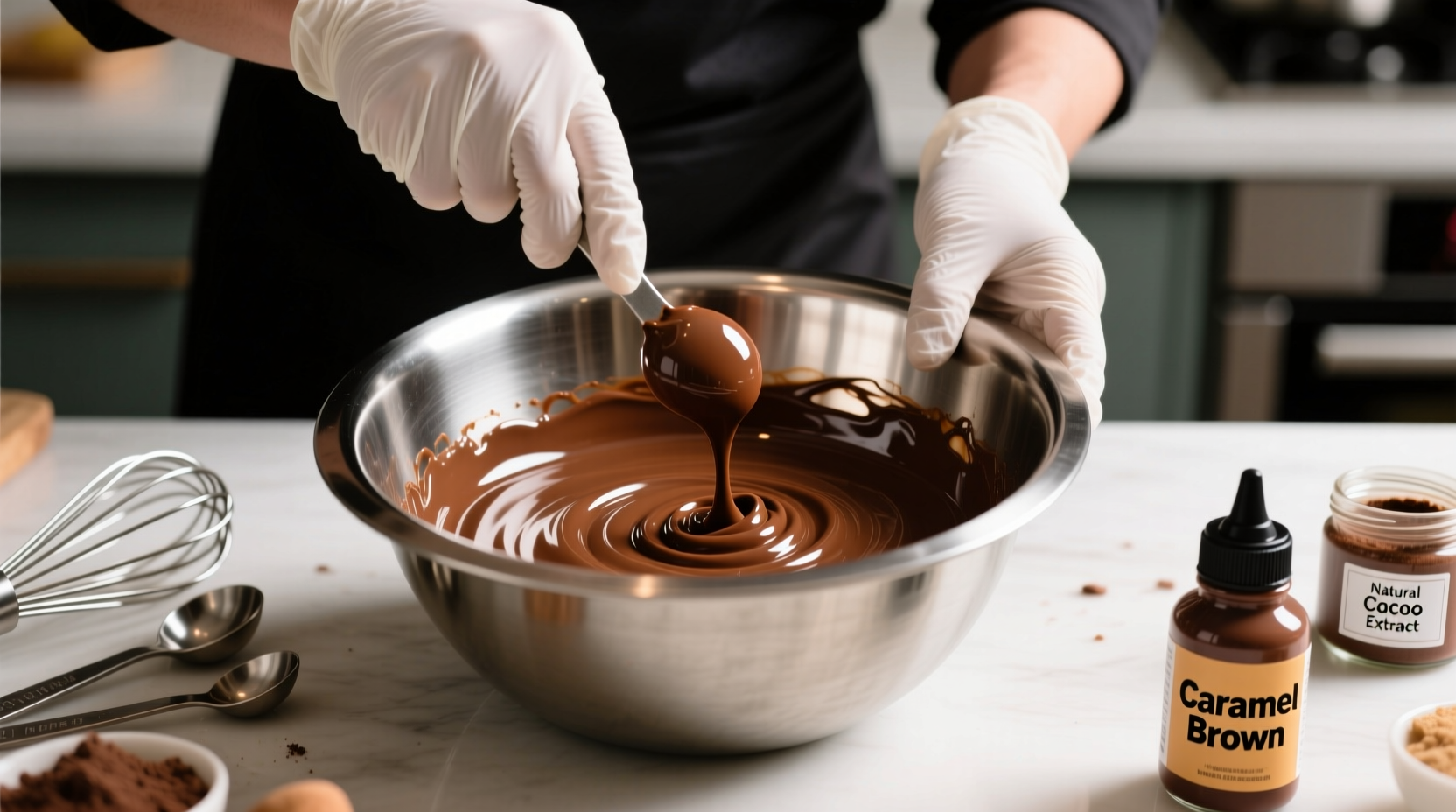The Science Behind Creating Brown Food Coloring
Understanding color theory is essential for creating perfect brown shades. Brown isn't a standard food coloring option because it's a tertiary color formed by combining all three primary colors. When red, yellow, and blue pigments mix, they absorb most wavelengths of light, creating that distinctive earthy brown tone.
Professional food stylists like myself use this same principle whether working with commercial gel colors or natural alternatives. The key is balance—too much of one primary color creates an undesirable undertone.
Step-by-Step Mixing Guide for Perfect Brown
Follow this professional method to achieve consistent brown shades every time:
- Start with your base: Place 1 teaspoon of clear liquid (water, extract, or frosting base) in a small bowl
- Apply the foundational ratio: Add 2 drops each of red, yellow, and blue food coloring
- Mix thoroughly: Stir for 30 seconds to ensure complete integration
- Evaluate and adjust: Check the shade under natural light
- Refine as needed: Add single drops of specific colors to correct undertones
| Desired Brown Shade | Color Ratio (Red:Yellow:Blue) | Common Applications |
|---|---|---|
| Rich Chocolate Brown | 3:2:1 | Chocolate cakes, brownie icing |
| Light Coffee Brown | 2:3:1 | Cappuccino frosting, beige decorations |
| Warm Caramel Brown | 3:1:1 | Caramel sauces, butterscotch accents |
| Cool Taupe Brown | 1:2:3 | Neutral cake decorations, realistic animal features |
Advanced Color Correction Techniques
Even experienced bakers encounter color challenges. Here's how to fix common issues:
- Too red? Add tiny amounts of green (which is yellow + blue) to neutralize
- Too yellow? Counter with minute drops of purple (red + blue)
- Too blue? Balance with small amounts of orange (red + yellow)
- Muddy appearance? You've overmixed complementary colors—start fresh with precise ratios
Remember that food coloring intensifies over time. Wait 15 minutes after mixing before making final adjustments, as the color will deepen slightly as pigments fully integrate with your medium.

When Standard Mixing Doesn't Work: Context Boundaries
This mixing method works perfectly for most applications, but certain situations require special consideration:
- Butter-based mediums: Fat content can mute colors—use gel coloring instead of liquid for better saturation
- High-sugar environments: Caramelization affects color—add brown coloring at the final stage
- Temperature variables: Cold mediums (like chilled frosting) require more coloring than room-temperature bases
- Existing colored bases: Chocolate or coffee-flavored bases already contain brown tones—use less coloring
According to the FDA's guidelines on food ingredients, all standard food colorings are safe when used in typical culinary amounts, but always check specific product instructions for concentration levels.
Natural Brown Alternatives
When commercial food coloring isn't available, these natural options create authentic brown shades:
- Cocoa powder: 1 teaspoon per cup of frosting (creates chocolate brown)
- Instant coffee: 1/2 teaspoon dissolved in 1 teaspoon water (creates coffee brown)
- Strongly brewed tea: Replaces liquid in recipes for subtle beige tones
- Blackstrap molasses: 1/2 teaspoon for rich, dark brown (adds flavor)
These natural alternatives follow the same color theory principles but require different measurement approaches. The USDA's food composition database confirms these ingredients contain natural pigments that interact predictably when combined with other food components.
Professional Tips for Consistent Results
After years of food styling for publications like Food & Wine, I've developed these reliability techniques:
- Use a white ceramic bowl for accurate color assessment
- Work under natural daylight whenever possible
- Document your successful ratios for future reference
- Store mixed brown coloring in an airtight container for up to 2 weeks
- Always mix a test batch before applying to your entire project
Understanding how to make brown food coloring gives you tremendous creative flexibility. Whether you're creating realistic animal features for cake decorating, achieving the perfect chocolate shade for holiday cookies, or developing custom colors for special dietary needs, this fundamental color mixing skill serves you well.











 浙公网安备
33010002000092号
浙公网安备
33010002000092号 浙B2-20120091-4
浙B2-20120091-4